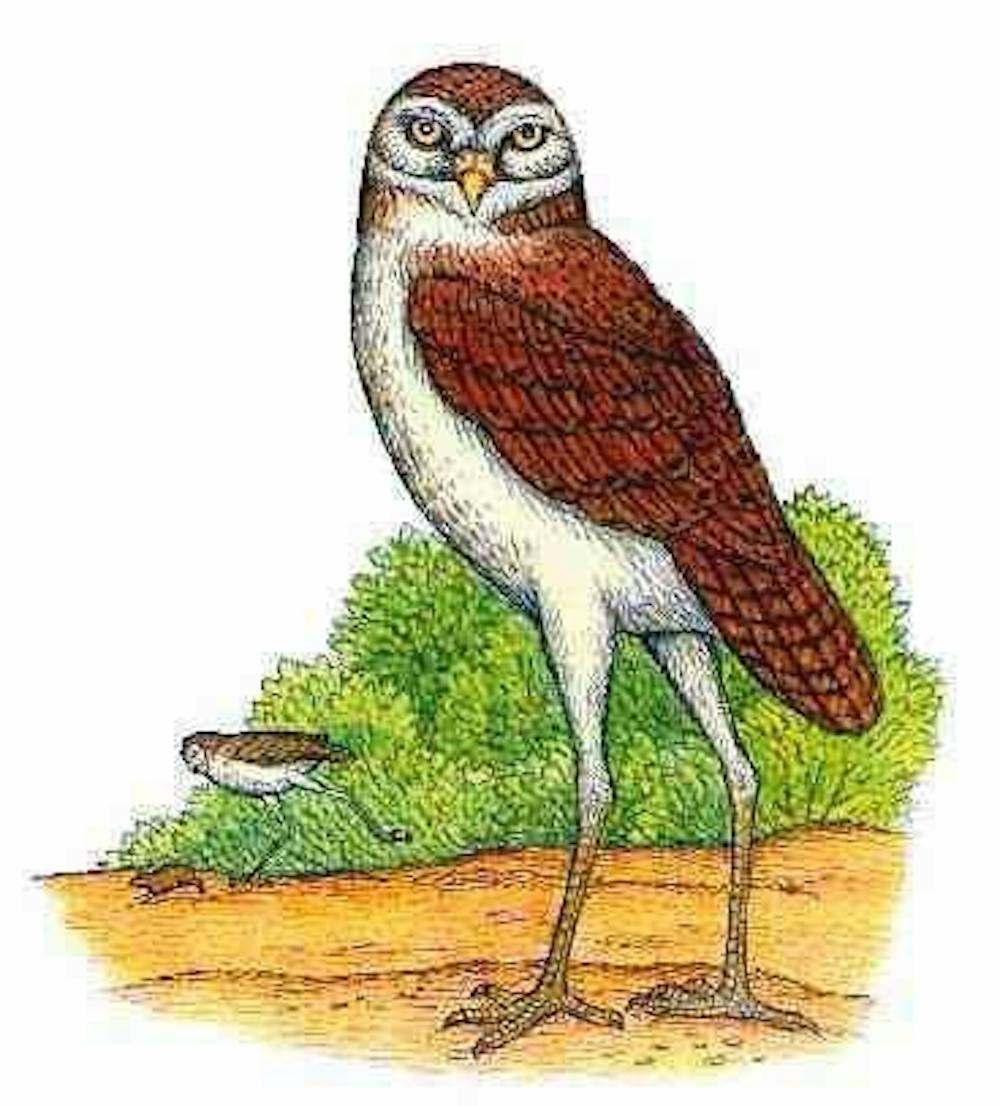by Mike Smith
Daily Lobo
In the piney mountains and desert mesas of south central New Mexico, residents of the Mescalero Apache Indian Reservation still share the legends of an enormous and evil bird: Big Owl.
The Jicarilla Apaches, along the state's northern edge, also talk of Big Owl, beneath the slickrock canyons and gray bluffs of their reservation. But in their stories, Big Owl can paralyze humans just by staring at them, and after doing so, it swallows them whole, just as smaller owls swallow mice.
Mark A. Hall, noted cryptozoologist and author of Thunderbirds: America's Living Legends of Giant Birds, is convinced that such stories may actually have a basis in fact, citing accounts of an actual undocumented species of 3-to-5-foot-tall giant owl, humorously nicknamed Bighoot. Ornimegalonyx oteroi, or the Cuban giant owl, was an approximately 3-foot-tall owl that lived in what's now western Cuba up until about 8,000 years ago. In the last few decades, three nearly intact skeletons of this bird have been found in Cuban caves, and their size and bone structure suggest this owl was similar to an oversized version of the common burrowing owl, with long legs and an ability to fly only short distances.
Get content from The Daily Lobo delivered to your inbox
Hall believes that perhaps some giant owls survived extinction, migrated, reproduced and became part of New Mexico's Apache oral histories - and there are a number of intriguing points that support his case. Mentions of giant owls occur throughout the mythology of American- and Canadian-Indian tribes. Many Iroquois once feared what they called Flying Heads - man-sized, bodiless, open-mouthed heads covered in ragged hair - heads that could fly in a halting way, were armed with talons and craved humans. Hall has theorized that the Flying Heads' hair was actually wings and feathers, and the Flying Heads themselves were actually giant owls.
Sightings of giant owls continued into the era of North America's first European-American settlers. Hall said some settlers saw their livestock carried off by enormous birds they called booger owls, and such sightings have persisted into the present, across America and across the Southwest.
"I have heard of them being encountered in Arizona, so New Mexico would be just as likely," Hall said.
In a chapter of Cryptozoology and the Investigation of Lesser-Known Mystery Animals, New Mexico journalist Jerry A. Padilla recounted a Taos woman's encounter with an owl she estimated to be at least 4 1/2 feet tall.
This incident reportedly took place in the 1950s, not far north of the New Mexico-Colorado state line, when Taos resident Rosa M. Lucero was a little girl. Lucero recalled the giant owl wandering silently from a cluster of willows, walking back and forth and just staring at her and her grandmother, Elena Bustos Lucero, as the two of them frantically gestured the sign of the cross.
"It just walked around in the garden by the willows," Rosa M. Lucero said in the above-mentioned book. "My grandmother was convinced it was a nagual - someone taking the form of an owl - because she herself said that in all her long life she'd never encountered an owl so large and unafraid of people."
Though generally described as making a hooting sound, owls are sometimes also said to hum. The Internet is studded with mentions of owls humming as coyotes howl, owls humming the sounds of the night and barn owls humming people to sleep. Taos Tales, by Elsie Clews Parsons, includes a northern New Mexico oral history of a coyote who "went singing and at the end of every song he said like the owl, hum! hum! (grunt)."
A much better-known hum in northern New Mexico is the notorious Taos Hum - a low, pulsing throb of a sound that torments about 2 percent of Taos's population, causing anxiety, dizziness, headaches, nosebleeds and insomnia. Many people have suggested possible explanations - a government project, aliens, mass hysteria - but the Hum's cause remains unknown.
Would it be ridiculous, though, to suggest that maybe, just maybe, the Taos Hum might be caused by man-sized owls - the Bighoot - humming throughout the New Mexico woods?
Well, would it?
Yes. The answer is yes. It would be.
Mike Smith is a UNM history major and the author of Towns of the Sandia Mountains. E-mail him with ideas for future columns at AntarcticSuburbs@yahoo.com.






